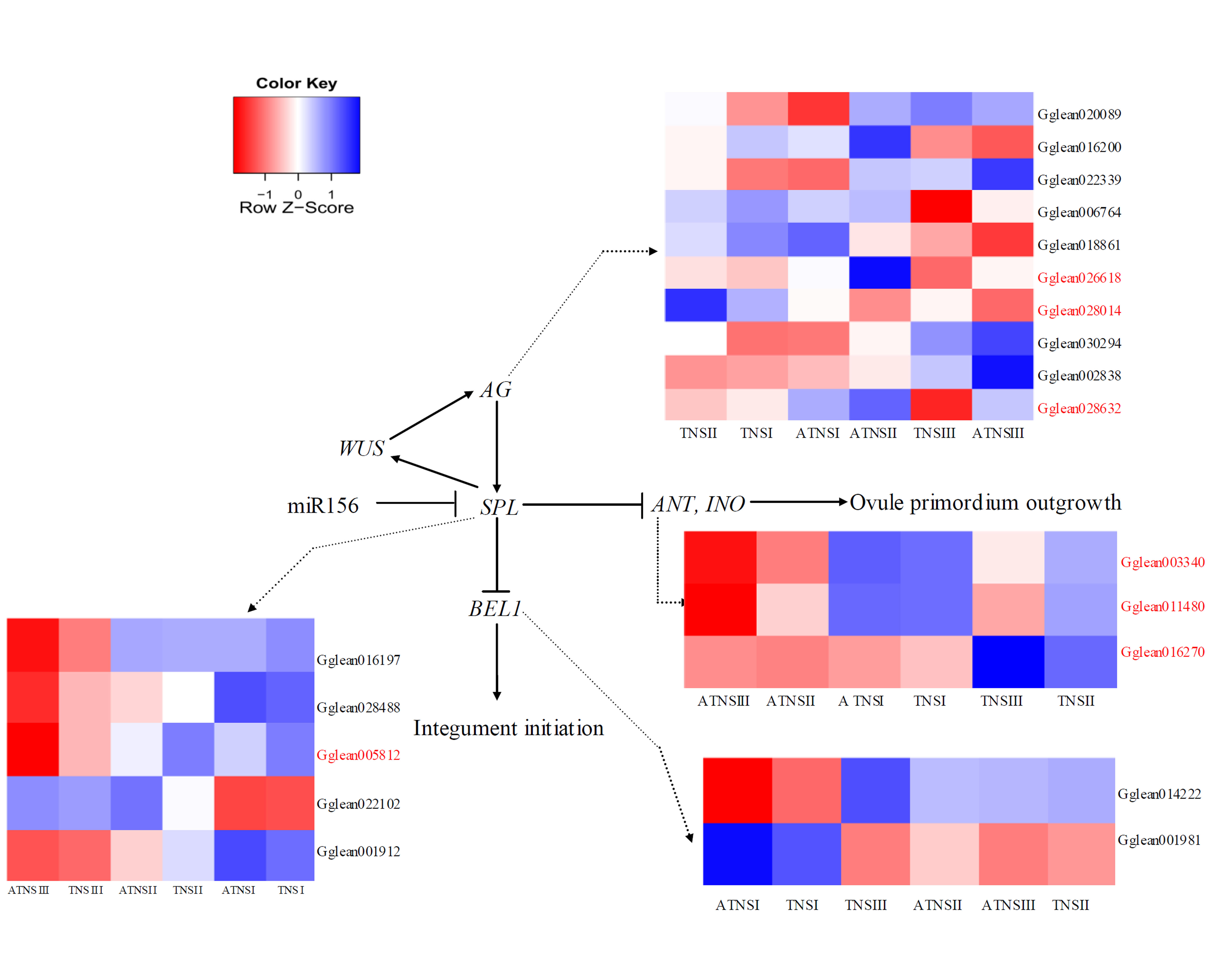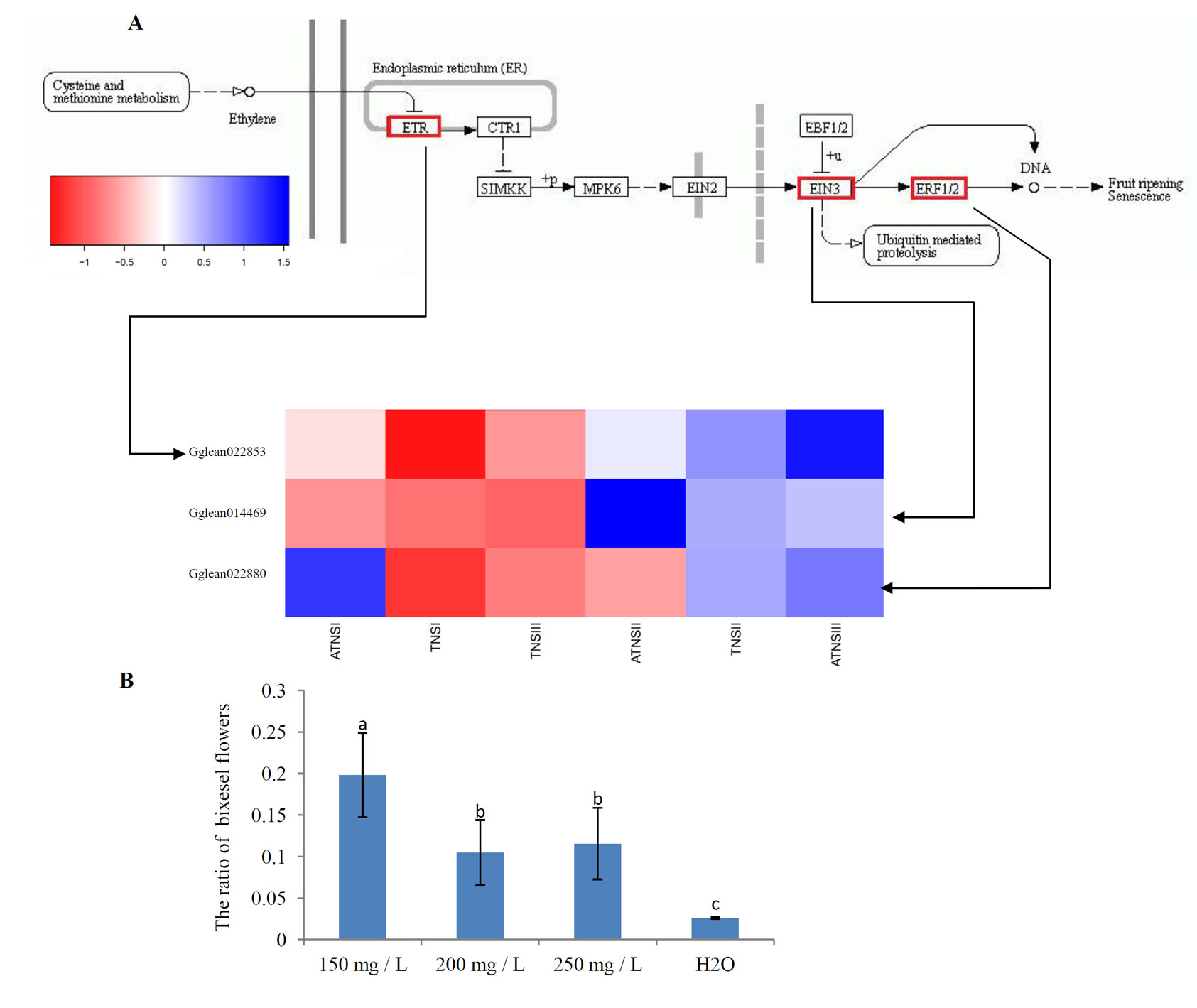In August, the Journal of 'frontiers in plant sciences' published a paper entitled"Transcriptomic Analysis Reveals Candidate Genes for Female Sterilityin Pomegranate Flowers" reported by Cao Shangyin's lab from Zhengzhou Fruit Research Institute, CAAS. In this paper, the authors reported the key stage and reason for female sterility as well as the candidate genes controlling and regulating female sterility in pomegranate.
Pomegranate (Punica granatum L.) is a shrub that is native to central Asia (Holland et al., 2009), it is valued for its juicy aril sacs,which are claimed to be of benefit to human health. Two types of flowers are produced on anindividual pomegranate tree: FMF and BF). FMFs, which are referred as “female-sterile” , or “bell-shaped”, fail to set fruit and eventually fall from the tree. BFs, on the other hand,posses well-formed pistils and can set fruit; thus they are known as “female-fertile”, “vase-shaped”. The proportion of BF correlateswith fruityield, whereas FMF assist in gene dispersal on account oftheir more efficient pollen production. FMF female sterility is caused mainly by abnormal ovule development. However, the molecular mechanism of female sterility in pomegranate remains unknown.

Figure 1 Expression of candidate genes involved in ovule development. Gene expression was measured by log2Ratio.

Figure 2 Expression of candidate genes involved in ethylene signal transduction. And effects of different concentrations of ethylene on the ratio of bisexual flowers.
Candidate genes of pomegranate female sterility were improved by transcriptome analysis. INNER OUTER (INO/YABBY4) (Gglean016270) and AINTEGUMENATA (ANT) homolog genes (Gglean003340, Gglean011480) which regulated the development of integument showed down-regulation in FMF than BF at the key stage of ovule development termination. Their upstream regulator genes like AGAMOUS-like (AG-like) (Gglean028014, Gglean026618, Gglean028632) and SPOROCYTELESS (SPL) homolog genes (Gglean005812) (Figure 1) also showed different expressed between BF and FMF at the key stage of ovule development termination. Moreover, the differential expression of ethylene response signal ETR (ethylene-resistant) (Gglean022853) and ERF1/2 (ethylene-responsive factor) (Gglean022880) (Figure 2)between FMF and BF indicated that ethylene signaling may also involved in the formation of pomegranate female sterile. The increase of BF with the spraying of ethephon also supported this results. This work was supported by the grants from the Agricultural Science and Technology Innovation Program (CAAS-ASTIP-2017-ZFRI -03) and the Key Project of the NationalScience and Technology Basic Work of China (2012FY110100).
By Chen Lina
1571863765@qq.com
